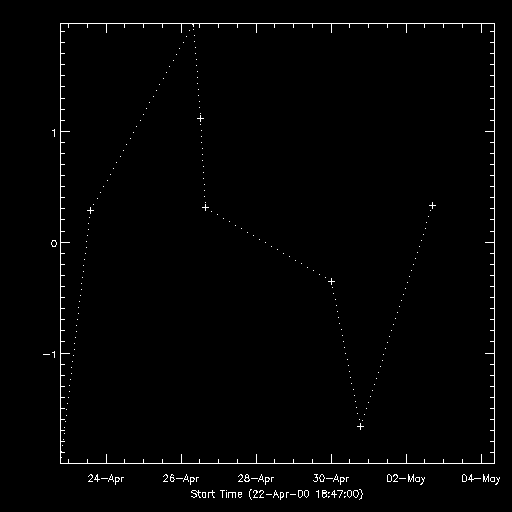

A plot showing that the longitudes of the flares that occurred in NOAA active region #7971 in late April and early May, 2000 varied by only a couple of degrees from their median longitude. The plot shows the longitude difference, in degrees, relative to the mean longitude of these flare. Note that we're using actual longitudes, which rotate with the Sun, rather than oft-used heliographic coordinates, which don't. The implication of the small scatter is that we can safely estimate the location of the Cinco de Mayo flare based on the known rotation rate of the Sun at this latitude and the time at which the flare occurred. The result is that the Cinco de May flare probably happened about 25 degrees beyond the limb. This means that most of the flare volume in the low corona was hidden behind the limb.